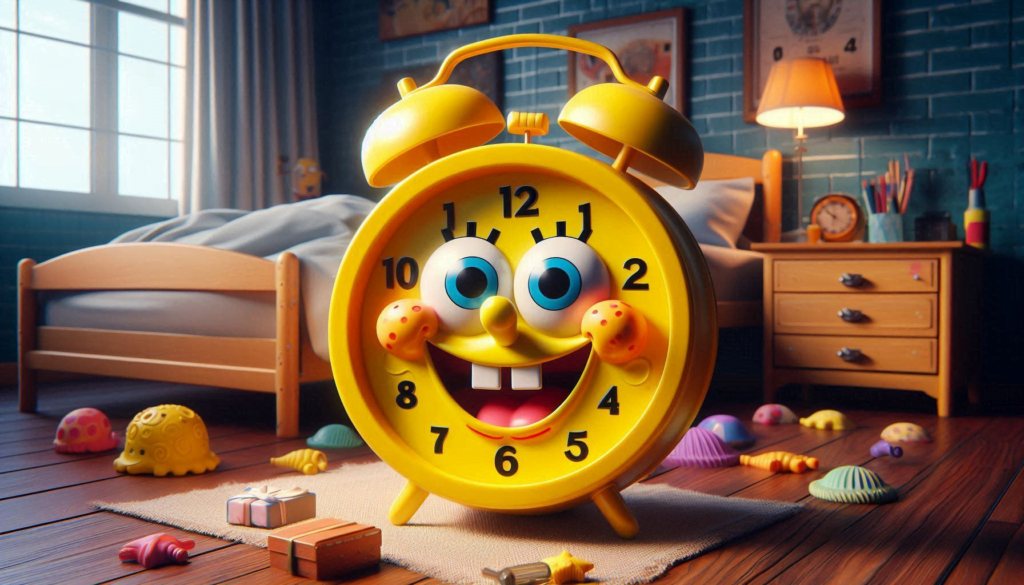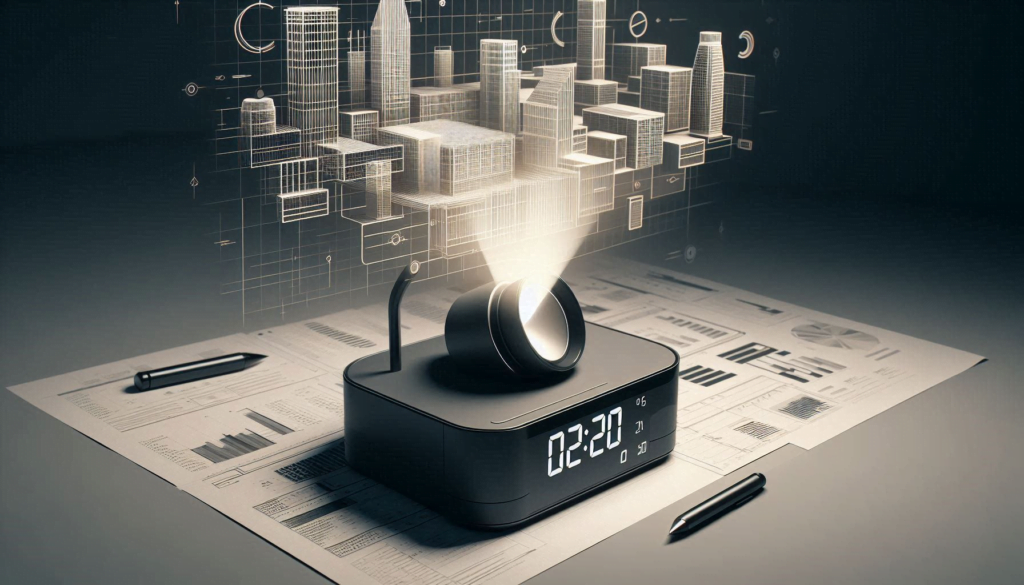Welcome to a Technology Moment, where we take a delightful journey into the world of a vintage alarm clock. In today’s blog, we’ll explore the charm, history, and enduring appeal of these timekeeping marvels that have graced bedside tables for generations. Join me as we uncover the craftsmanship, nostalgia, and timeless reliability of the vintage alarm clock, a true icon of an era gone by.
Importance of alarm clocks in daily life:
- Begin by highlighting the ubiquitous role alarm clocks play in everyday routines. They serve as essential tools for waking up on time, ensuring punctuality for work, school, or appointments.
- Mention how alarm clocks have been a part of human history for centuries, evolving from simple mechanical devices to sophisticated digital gadgets.
Nostalgia and charm of vintage items:
- Introduce the concept of vintage items and their enduring appeal in today’s world. Vintage items often evoke nostalgia for past eras, reminding people of simpler times or cherished memories.
- Focus specifically on why vintage alarm clocks hold a unique charm: their aesthetic design, craftsmanship, and the tactile experience of using a mechanical timepiece.
Table of Contents
History of Alarm Clocks
Early inventions and developments:
- Ancient origins: Start by mentioning the earliest known forms of timekeeping devices used by ancient civilizations, such as sundials or water clocks, which served rudimentary alarm functions.
- Medieval advancements: Discuss how mechanical alarm clocks began to appear in medieval Europe, such as the verge and foliot escapement mechanisms used in early tower clocks.
- Industrial Revolution: Highlight the significant advancements during the Industrial Revolution, which led to the mass production and refinement of alarm clock designs, making them more affordable and accessible to the general public.
Evolution of alarm clock design:
- 19th-century innovations: Describe the innovations in alarm clock design during the 19th century, including the introduction of wind-up mechanisms and bell alarms.
- Early 20th century: Discuss the transition from mechanical to electric alarm clocks, which provided greater accuracy and convenience.
- Digital era: Explain how digital technology revolutionized alarm clocks in the latter half of the 20th century, offering features like radio alarms, snooze functions, and LED displays.
What Defines a Vintage Alarm Clock?

Criteria for categorizing as vintage:
- Age: Vintage alarm clocks are typically considered to be those manufactured several decades ago, generally from the early to mid-20th century. The exact timeframe can vary, but they are usually at least 20-30 years old.
- Design aesthetic: They often exhibit design elements that are characteristic of the era in which they were produced, such as Art Deco influences in the 1920s or sleek mid-century modern styles in the 1950s.
- Mechanical or early electronic: Vintage alarm clocks may feature mechanical movements (wind-up or spring-driven) or early electronic components (such as vacuum tubes or early transistors), distinguishing them from modern digital counterparts.
Popular vintage alarm clock brands:
- Highlight well-known manufacturers that produced iconic vintage alarm clocks, such as Westclox, Seth Thomas, Jaeger-LeCoultre, and others.
- Discuss how these brands contributed to the design and innovation of alarm clocks during their respective eras, influencing the market and collector interest.
Types of Vintage Alarm Clocks
Mechanical vs. electronic:
- Mechanical alarm clocks: These are powered by mechanical movements, typically requiring winding up with a key or spring mechanism. They often feature traditional clockwork mechanisms like gears and escapements.
- Electronic alarm clocks: Introduced later in the 20th century, electronic alarm clocks use electrical components for timekeeping and alarm functions. They may include early transistor-based designs or more advanced digital displays.
Different styles and materials used:
- Art Deco: Highlight alarm clocks from the 1920s to 1940s characterized by sleek lines, geometric shapes, and bold colors typical of the Art Deco movement.
- Mid-century modern: Discuss alarm clocks from the 1950s and 1960s known for their minimalist designs, use of materials like Bakelite or wood, and emphasis on functionality.
- Retro and kitsch: Explore alarm clocks from the 1970s onward that reflect nostalgic or whimsical designs, often featuring bright colors, novelty shapes, or cartoonish motifs.
Unique features and functionalities:
- Double-bell alarm clocks: Known for their loud ringing bells, these clocks are iconic for their distinctive alarm sound.
- Flip clocks: Characterized by flipping number displays, these clocks were popular in the mid-20th century and have a unique visual appeal.
- Travel alarm clocks: Compact and durable, designed for portability with features like foldable cases or protective covers.
Collectible categories:
- Rare or limited edition: Discuss alarm clocks that are considered rare due to limited production numbers or unique features that distinguish them from mass-produced models.
- Designer or luxury brands: Explore alarm clocks produced by renowned designers or luxury brands, known for their craftsmanship, materials, and exclusivity.
Benefits of Owning a Vintage Alarm Clock
Aesthetic appeal and decor enhancement:
- Vintage alarm clocks often feature unique designs, craftsmanship, and materials that add a touch of elegance and charm to any space.
- They can serve as decorative pieces that complement various interior styles, from traditional to modern eclectic, becoming focal points or conversation starters in a room.
Durability and craftsmanship:
- Vintage alarm clocks are typically made from durable materials such as metal, wood, or Bakelite, known for their longevity and robust build.
- They often showcase intricate craftsmanship, including detailed clock faces, decorative elements, and finely tuned mechanical movements that reflect the skill of earlier artisans.
Historical and nostalgic value:
- Owning a vintage alarm clock allows individuals to connect with history and past eras, offering a tangible link to technological advancements and design trends of the time.
- Many people find nostalgic value in vintage items, evoking memories of childhood or simpler times, making them cherished possessions with sentimental value.
Environmental sustainability:
- Choosing to use or collect vintage alarm clocks supports sustainable practices by extending the lifespan of existing products rather than contributing to new manufacturing processes.
- It aligns with principles of reuse and recycling, reducing overall environmental impact associated with consumer goods.
Conversation piece and collector’s item:
- Vintage alarm clocks often spark curiosity and interest among guests, leading to discussions about their design, history, and cultural significance.
- They can also be valuable collector’s items, especially rare or limited-edition models, contributing to a hobby of collecting and preserving historical artifacts.
Factors to Consider When Buying
Condition and functionality:
- Physical condition: Assess the overall condition of the alarm clock, including any visible wear, scratches, or damage to the case, dial, or hands.
- Mechanical condition: For mechanical clocks, check the winding mechanism, movement accuracy, and the functionality of the alarm feature. Ensure that the clock runs smoothly and keeps accurate time.
Authenticity and provenance:
- Manufacturer markings: Look for manufacturer’s marks, logos, or serial numbers that can help verify the authenticity and origin of the alarm clock.
- Provenance: If possible, inquire about the history of the clock, including previous owners or any documentation that confirms its authenticity and historical significance.
Pricing and value assessment:
- Market value: Research current market prices for similar vintage alarm clocks to understand fair pricing. Factors such as rarity, condition, and demand can influence the value.
- Budget: Determine your budget range based on the type of clock you desire and its condition. Consider whether you’re willing to invest in restoration or maintenance costs.
Seller reputation and reliability:
- Source of purchase: Buy from reputable sellers, such as antique shops, vintage dealers, or established online marketplaces known for selling authentic collectibles.
- Return policies: Understand the seller’s return policies and guarantees regarding authenticity and condition, especially when buying online or from unfamiliar sources.
Compatibility with lifestyle and decor:
- Functional needs: Consider how the alarm clock will fit into your daily routine. Determine if its alarm features, size, and usability align with your preferences and lifestyle.
- Aesthetic appeal: Choose a clock that complements your interior decor style, whether it’s a classic Art Deco piece or a sleek mid-century modern design.
Maintenance Tips
Cleaning and care guidelines:
- Dust regularly: Use a soft, dry cloth or a gentle brush to remove dust and debris from the clock’s exterior and crevices.
- Clean the clock face: Use a microfiber cloth slightly dampened with water or a mild, non-abrasive cleaner to gently wipe the clock face and remove any smudges or dirt. Dry immediately to prevent water damage.
Handling mechanical components:
- Winding mechanism: If your vintage alarm clock is mechanical and requires winding, follow the manufacturer’s instructions for proper winding technique and frequency to avoid over-winding or causing damage to the mechanism.
- Oil and lubrication: Periodically, consult a professional clockmaker or watchmaker for lubrication of the clock’s moving parts to ensure smooth operation and prevent wear.
Storage and display considerations:
- Avoid direct sunlight: Display your vintage alarm clock away from direct sunlight and sources of heat to prevent fading of materials and potential damage to internal components.
- Protective storage: When not in use or during transport, store the clock in a protective case or box to prevent dust accumulation, scratches, or accidental damage.
Addressing mechanical issues:
- Professional servicing: If you notice issues such as inconsistent timekeeping, alarm malfunctions, or unusual sounds, consult a qualified clock repair technician for diagnosis and repair.
- DIY maintenance: For enthusiasts comfortable with basic repairs, learn about simple adjustments like regulating the clock’s timekeeping accuracy or addressing minor mechanical issues cautiously.
Preservation of original features:
- Avoid modifications: Preserve the clock’s authenticity and value by avoiding unnecessary modifications or alterations to its original design, materials, or functionality.
- Documentation: Keep records of any maintenance or repairs performed, along with any historical information or provenance related to the clock, to maintain its collector’s value.
Where to Find Vintage Alarm Clocks
Antique shops and flea markets:
- Physical locations: Visit local antique shops, vintage stores, or flea markets known for selling a wide range of antiques and collectibles.
- Advantages: These venues often offer a hands-on experience where you can inspect clocks in person, ask questions, and potentially negotiate prices directly with sellers.
- Tips: Arrive early for the best selection, and consider building a relationship with dealers who specialize in clocks or vintage items.
Online marketplaces and auctions:
- Websites: Explore online platforms like eBay, Etsy, and specialized antique websites that list vintage alarm clocks for sale.
- Advantages: Online shopping provides access to a broader range of clocks from around the world, including rare or unique models. It also allows for easy comparison of prices and conditions.
- Tips: Read seller reviews, check return policies, and verify the authenticity and condition of the clock through detailed photos and descriptions before making a purchase.
Estate sales and auctions:
- Local listings: Monitor local estate sales, auctions, or estate liquidation events where vintage items, including clocks, are often available.
- Advantages: Estate sales may offer opportunities to find well-preserved or unique pieces at competitive prices, especially if the previous owner had a collection of antiques.
- Tips: Arrive early on sale days for the best selection, and be prepared to bid competitively if participating in an auction.
Specialty clock shops and dealers:
- Specialized stores: Seek out specialty clock shops or dealers who focus on vintage clocks and timepieces.
- Advantages: These experts can provide valuable knowledge, authenticate clocks, and offer a curated selection of high-quality pieces.
- Tips: Build relationships with reputable dealers who can notify you of new arrivals or specific pieces matching your interests.
Online forums and collector communities:
- Community platforms: Join online forums, social media groups, or collector communities dedicated to vintage clocks.
- Advantages: Members often share tips, recommendations, and even listings of clocks for sale. It’s a great way to connect with fellow enthusiasts and learn about upcoming auctions or rare finds.
- Tips: Participate actively in discussions, seek advice from experienced collectors, and consider attending virtual or in-person meetups and conventions.
Popular Vintage Alarm Clock Models

Iconic designs and features:
- Westclox Big Ben: Introduced in 1908 by the Western Clock Company (later known as Westclox), the Big Ben is celebrated for its durable design, loud alarm bell, and classic look. It became a staple in many households across America.
- Seth Thomas Baby Ben: A smaller version of the popular Seth Thomas alarm clocks, known for its sturdy build, reliability, and distinct alarm sound. It was produced from the early to mid-20th century.
- Jaeger-LeCoultre Memovox: A luxury mechanical alarm clock introduced in the 1950s by Swiss watchmaker Jaeger-LeCoultre, featuring a mechanical movement with a vibrating alarm function and elegant design.
Collector favorites:
- Telechron Electrolarm: Known for its Art Deco styling and electric alarm function, the Telechron Electrolarm was popular in the 1930s and 1940s, showcasing streamlined design and innovative technology for its time.
- Bulova Travel Alarm Clock: Compact and highly portable, the Bulova Travel Alarm Clock gained popularity in the mid-20th century for its reliability and stylish design, often featuring luminous hands and Arabic numerals for easy reading.
- Junghans Mega: A mid-century modern electronic alarm clock known for its sleek design, large digital display, and innovative features such as radio-controlled time synchronization, introduced in the 1970s.
Unique features and innovations:
- Flip clocks: Models like the Copal Flip Clock or the Panasonic RC Series gained popularity in the mid-20th century for their unique flipping number display mechanism, combining functionality with a retro aesthetic.
- Double-bell alarm clocks: Characterized by their distinctive ringing bells, double-bell alarm clocks like the Japy or Kienzle models are cherished for their loud, nostalgic alarm sound and vintage appeal.
- Novelty and character clocks: Clocks featuring whimsical designs, novelty shapes, or character-themed motifs, such as Disney-themed alarm clocks or clocks shaped like animals, cars, or airplanes.
Conclusion
Recap the main reasons why vintage alarm clocks hold significance and appeal to collectors and enthusiasts. Highlight points such as their aesthetic charm, historical value, and unique craftsmanship.
Emphasize how vintage alarm clocks not only serve practical functions like timekeeping and alarm setting but also enhance interior decor with their distinctive designs and materials.
Discuss the nostalgic value that vintage alarm clocks evoke, connecting people to past eras and reminding them of simpler times or cherished memories.
Encourage readers to consider preserving vintage alarm clocks as historical artifacts, appreciating them as tangible pieces of technological and design history.
Consider the future of vintage alarm clocks in a digital age, acknowledging their enduring appeal and continued relevance among collectors and enthusiasts.
FAQs – frequently asked questions
How can I determine if a vintage alarm clock is authentic?
Authenticity in vintage alarm clocks can be confirmed through several methods. Look for manufacturer markings, logos, or serial numbers that are typical for the brand and era of production. Additionally, examine the design and materials used; authentic vintage clocks often showcase craftsmanship and detailing characteristic of their time period. Consulting with reputable sellers or experts in vintage clocks can also help verify authenticity based on their knowledge and experience.
What are some popular brands known for producing vintage alarm clocks?
Several brands have gained renown for their contributions to the vintage alarm clock market. Some popular brands include Westclox, known for its durable and iconic Big Ben models; Seth Thomas, recognized for the reliable Baby Ben series; and Jaeger-LeCoultre, celebrated for its luxury mechanical alarm clocks like the Memovox. Each brand often represents distinct styles, designs, and innovations that appeal to collectors and enthusiasts alike.
How should I care for and maintain a vintage alarm clock?
Proper maintenance is crucial for preserving the condition and functionality of a vintage alarm clock. Regularly dust the clock using a soft, dry cloth to prevent buildup of dirt and debris. Avoid harsh chemicals or abrasive cleaners that could damage delicate surfaces. For mechanical clocks, ensure the winding mechanism is handled gently and lubricate moving parts periodically as recommended by a professional clockmaker. Store the clock away from direct sunlight and extreme temperatures to prevent damage to materials and internal mechanisms.
Where can I find vintage alarm clocks for purchase?
Vintage alarm clocks can be found through various sources both online and offline. Consider visiting antique shops, flea markets, and estate sales where collectors often showcase their collections. Online platforms such as eBay, Etsy, and specialized antique websites also offer a wide range of vintage alarm clocks for sale. Building relationships with reputable dealers or joining collector communities can provide access to unique pieces and expert advice on acquiring vintage timepieces.
What factors should I consider when evaluating the value of a vintage alarm clock?
Several factors influence the value of a vintage alarm clock, including its age, rarity, condition, and historical significance. Clocks in pristine condition with all original parts intact and functioning typically command higher prices among collectors. The reputation of the manufacturer, specific model features, and current market demand also play a role in determining value. Researching recent sales prices for similar clocks can provide insights into fair market value, while consulting with experts or appraisers may offer more precise valuation based on detailed examination and knowledge of the market trends.














I absolutely loved reading about the charm and history of vintage alarm clocks! It’s fascinating how these seemingly simple devices have such rich stories behind them. I particularly enjoyed learning about the craftsmanship that went into their design and how they’ve evolved over time.
The example of the mid-century rotary alarm clock was especially interesting. It’s amazing to think that such a seemingly mundane object could have such a stylish and functional design. I can see why vintage alarm clocks have such a timeless appeal—they combine practicality with a touch of nostalgia that’s hard to find in modern gadgets. Thanks for sharing this delightful exploration into a piece of history!